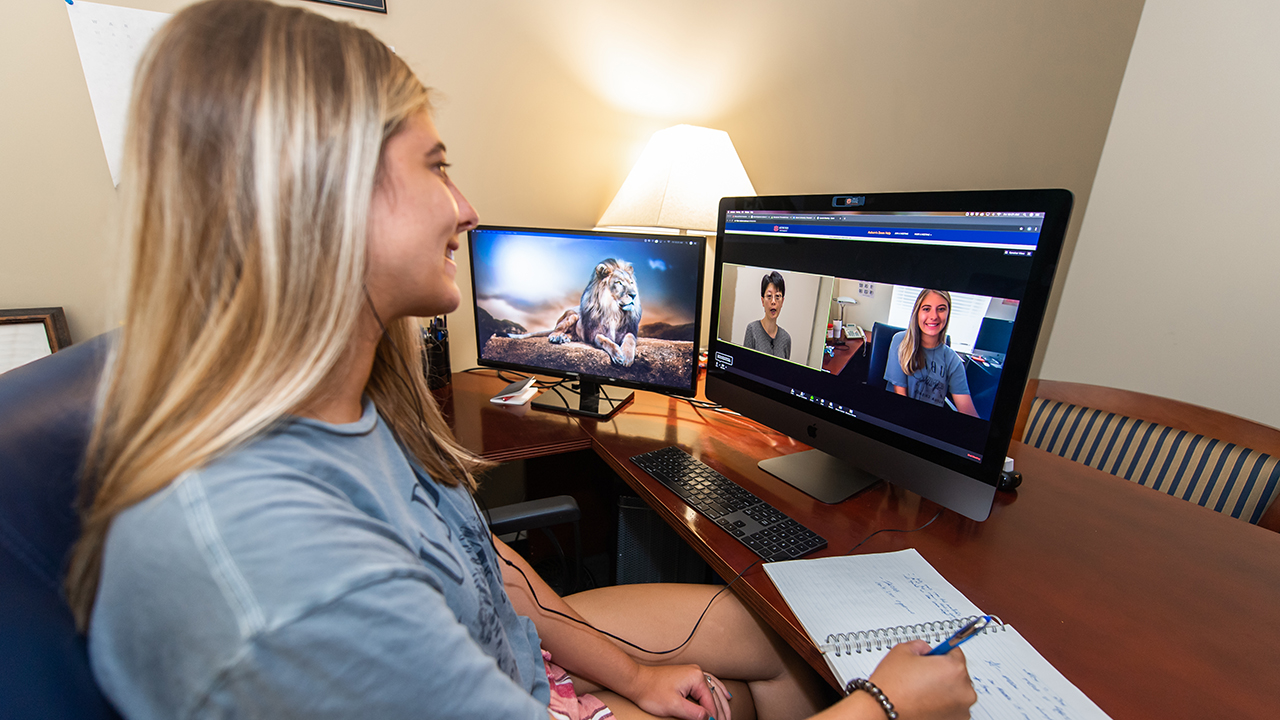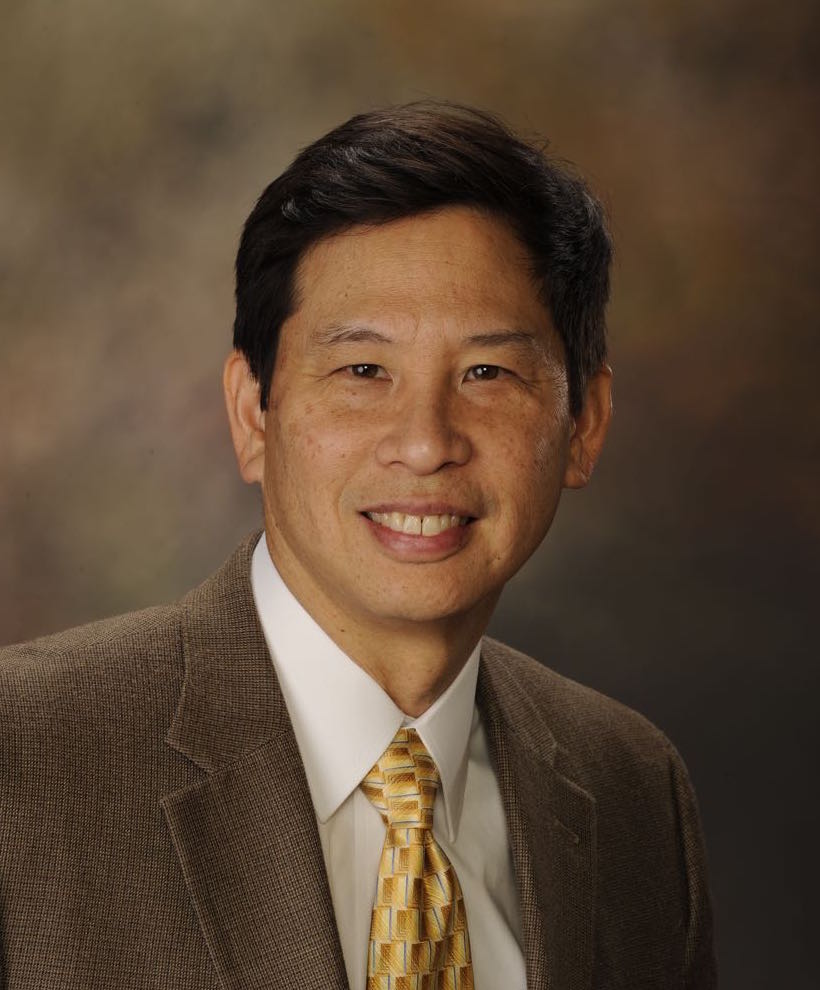Auburn Engineering staff, Biggio Center steer transition to remote courses
Published: Apr 28, 2020 9:36 AM
By Karen Hunley
Six weeks ago, spring break at Auburn was overshadowed by an evolving series of messages from administration regarding the university’s response to the COVID-19 pandemic, and by March 20, students and faculty learned that all courses would be continued remotely through the end of the spring semester.
For the Samuel Ginn College of Engineering, the largest college at Auburn, more than 800 courses in eight departments would be moved completely online. The president’s office later announced Summer 2020 Sessions 1 and 2 would also be held remotely.
“The positive way in which our faculty, staff and students have responded to this alternate instruction model truly demonstrates the character of the Auburn family,” said Christopher B. Roberts, dean of engineering. “Our Engineering Network Services, Engineering Online staff and the Biggio Center, in particular, were integral parts of this massive process, wasting no time in developing tools and resources to ensure the smoothest possible transition.”
For Shannon Price, director of Engineering Network Services, the largest hurdle has been ensuring students have access to the necessary software to complete their assignments. Students traditionally access a variety of technical software in the computer labs on campus – no longer an option – and students’ personal computers often won’t support that software.
ENS responded by purchasing new software that provides remote students with a virtual gateway to computers in the on-campus labs and even steers them to specific machines based on the software they need. The college also purchased MATLAB for all students; MATLAB is the primary technical computing software used in engineering courses.
Price said ENS has also spent a lot of time getting instructors the equipment they need to teach from home, including desktop monitors, web cameras and even small document cameras so some can continue to draw out formulas and technical illustrations in real time for students.
“The instructors use a variety of different methods to teach, so it was important to get them the equipment they need to teach how they are most comfortable,” he said.
Many online resources such as Canvas, the university’s learning management system, were already available to faculty and students and helped ease the move to online instruction, as did the Auburn Engineering Online and Continuing Education office staff and resources, Price added. Engineering Online and Continuing Education offers more than 50 online courses and 21 graduate programs that are fully online.
Bill Cameron, assistant director of Engineering Online and Continuing Education, said his team immediately began contacting faculty during spring break to help them decide the best methods to continue their courses and offer technical assistance.
Since then, the team has helped familiarize hundreds of instructors with programs such as Zoom and Panopto, the college’s video recording and streaming platform. Through Panopto, faculty have learned to capture, record and even digitally edit their lectures.
“You have people with different levels of technology skills, and you just have to meet them where they are,” said Alicia Harkless, instructional designer for Engineering Online and Continuing Education.
Harkless held multiple technology training sessions for faculty, both in person and through Zoom. Those larger sessions, each with about 60 to 100 participants, prompted dozens of other one-on-one sessions, phone calls and emails from faculty with more questions.
“The faculty have been very resilient in terms of getting all that they were doing face-to-face to translate to the online world,” Harkless added. “They are maintaining the original structure and content of their courses as much as possible.”
For example, she helped one instructor set up Zoom “breakout rooms” so that students could continue working in pre-assigned groups during class time and the instructor could drop in and out of each group as needed.
Both Price and Harkless credit the Biggio Center and its Course Continuity Preparation website, directed by Asim Ali, for providing invaluable online learning solutions. For example, faculty, staff and students all have access to Biggio’s “Bighelp” Zoom meetings, where they can get live, remote help anytime during business hours.
Price said instructors have primarily sought help with lecture capture, giving assignments and testing.
“Biggio got organized very quickly with information about how to transition to online teaching and learning,” Price continued. “They shared resources, met with us very early and kept very long hours to support faculty and students with issues.”
Throughout the process, Cameron’s media resources team has been tasked with checking materials faculty posts on Canvas and ensuring there are no issues with the technology, ideally before students try to access the materials.
However, professors such as John Hung, who teaches undergraduate and graduate courses in the Department of Electrical and Computer Engineering, are still trying to figure out the best way to remotely teach laboratory courses, which are so hands-on by nature.
“One of the undergraduate courses I teach is a huge challenge because it is about 80% lab work,” Hung said. “I’ve been extremely fortunate to have five exceptional teaching assistants who have been creative and very responsive… it is requiring a Herculean effort, not to mention investment in materials and equipment.”
No technology can fully replicate in-person interaction with students, says Jacqueline Hundley, senior lecturer in the Department of Computer Science and Software Engineering who currently teaches 460 freshman in an introductory computer science course.
“I miss reading the students’ faces during a class lecture and discussion, and I miss face-to-face office hours,” Hundley said.
The transition has been frustrating at times, agreed both Harkless and Price, but overall they say faculty have been positive, patient and committed to the academic standards of their courses.
“You don’t want to lose the integrity of the programs just because you had to transition to a remote environment,” Harkless said. “At the same time, faculty have been compassionate and flexible in working with students.”
Media Contact: , kam0003@auburn.edu, 334.844.2224
Auburn Engineering faculty and students have made Zoom a centerpiece of online learning.


